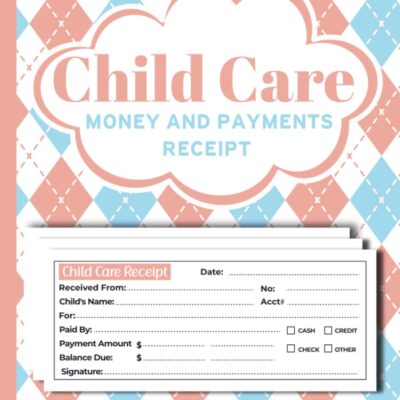
Hey there, soon-to-be parents! Recognizing Labor Signs before your baby arrives, you might wonder how to spot those first signs of labor. It can be nerve-wracking, but don’t worry—knowing what to look for can help you feel more prepared and less anxious. Let’s break down the early signs of labor in simple terms, so you know exactly what to expect.
Braxton Hicks Contractions vs. Real Labor Contractions
You’ve probably heard of Braxton Hicks contractions. These are like practice runs for your uterus. They can start showing up in your second trimester and feel like a tightening in your belly. They’re irregular, don’t follow a set pattern, and usually aren’t very painful. Think of them as your body’s way of getting ready for the real deal.
Now, real labor contractions are a different story. These contractions are regular and become stronger and closer together over time. They often start in your lower back and move to the front of your belly. Unlike Braxton Hicks, these contractions are not going to go away if you change positions or drink a glass of water. Your body tells you it’s time to get ready for the big event!
* Mucous Plug Loss
Another sign to watch for is the loss of the mucous plug. This is a thick, jelly-like substance that has been sealing your cervix during pregnancy to keep your baby safe. As you get closer to labor, this plug may come out. It might come out all at once or in bits over time. The mucous plug can be clear, pink, or bloody—hence the term “bloody show.” It’s a sign that your body is getting ready for labor, but it doesn’t mean that labor is happening right now.
* Bloody Show
Speaking of the bloody show, this is another indicator that labor could be near. It’s the mucous plug mixed with a bit of blood. It can be pink or light red and might happen a few days or even a week before you enter labor. It’s a normal part of the process, but if you notice heavy bleeding, you should give your healthcare provider a call just to be sure everything is okay.
Key Symptoms to Watch For
So, what are the main signs you should look for as you approach labor? Here are some key symptoms that will help you know when to head to the hospital or birthing center.
* Regular Contractions
Regular contractions are among the most significant signs that you’re in labor. Unlike Braxton Hicks, these contractions follow a pattern. They start less frequently and become closer together as time goes on. You can use a contraction timer or app to record how long each contraction lasts and how often they happen. When contractions consistently come every 5 to 10 minutes and last for 60 seconds or more, it’s usually time to call your healthcare provider.
* Water Breaking
Another clear sign of labor is when your water breaks. This is when the amniotic sac, which has been holding your baby and the amniotic fluid, bursts. You might experience a gush or a steady trickle of liquid. It’s usually straightforward, but sometimes it can be pink or greenish if your baby has had a bowel movement. If your water breaks, contact your healthcare provider or head to the hospital, especially if the fluid is green or if you have any other concerns.
* Lower Back Pain and Cramping
Recognizing Labor Signs is Lower back pain and cramping are joint during labor. This discomfort often feels like intense menstrual cramps and can start in your lower back before moving to your abdomen. Unlike other types of back pain, labor-related back pain usually comes with regular contractions. If you’re feeling this pain along with regular contractions, it’s a good sign that labor might be starting.
Other Signs of Approaching Labor
Apart from the main symptoms, there are a few other signs that labor might be coming. Watch for these, as they can give you additional clues.
* Changes in Baby’s Movement
As labor approaches, you might notice changes in how your baby moves. They might move less frequently or shift positions. This is often because your baby is settling into the birth canal, or there’s less room for movement. Should you find a notable drop in fetal activity, it’s essential to contact your healthcare provider to make sure everything is okay.
* Increased Nesting Instinct
Many expecting women have a burst of energy and a strong urge to prepare their home for the baby. This is known as the nesting instinct. You might find yourself cleaning, organizing, or setting up the nursery like never before. While this doesn’t necessarily mean labor is imminent, it’s a sign that your body is gearing up for the big day.
* Digestive Changes
As labor nears, some women experience changes in their digestive system. This could mean more frequent bowel movements or even diarrhea. These changes are related to hormonal shifts that help prepare your body for labor. Although digestive changes alone aren’t a definitive sign of labor, they often happen alongside other symptoms.
When to Contact Your Healthcare Provider
Knowing when to contact your healthcare provider ensures a smooth transition into labor.
* Timing and Frequency of Contractions
If your contractions come every 5 to 10 minutes and last around 60 seconds, it’s time to contact your healthcare provider. They’ll advise you on whether to head to the hospital or wait longer.
* If You’re Unsure
If you need clarification about whether you’re in labor or have any concerns, feel free to call your healthcare provider. It’s always better to check in, even if you need more time. If you experience heavy bleeding, a decrease in fetal movement, or any other troubling symptoms, give your provider a call immediately.
* Preparing for a Hospital or Birth Center Visit
When it’s time to go to the hospital or birthing center, ensure you’re ready. Pack your hospital bag with essentials like identification, health insurance information, comfortable clothes, and items for your baby. Knowing your expectations from your vacation will enable you to calm down and straighten out the experience.
Conclusion
Recognizing Labor Signs doesn’t have to be stressful. By understanding what to look for and when to call your healthcare provider, you can feel more confident and prepared as you approach this exciting time. Remember, every labor experience is unique, so listen to your body and seek support if needed. You’re almost there, and soon, you’ll welcome your little one into the world!
Feel free to share your experiences or ask for more advice if you have any questions. Though knowing what to anticipate will help you remain calm and focused as you move closer to meeting your baby, preparing for labor can feel overwhelming.
If you want to learn my #1 Palmer’s Cocoa Butter Formula Massage Lotion For Stretch Marks, Click Here Now.





